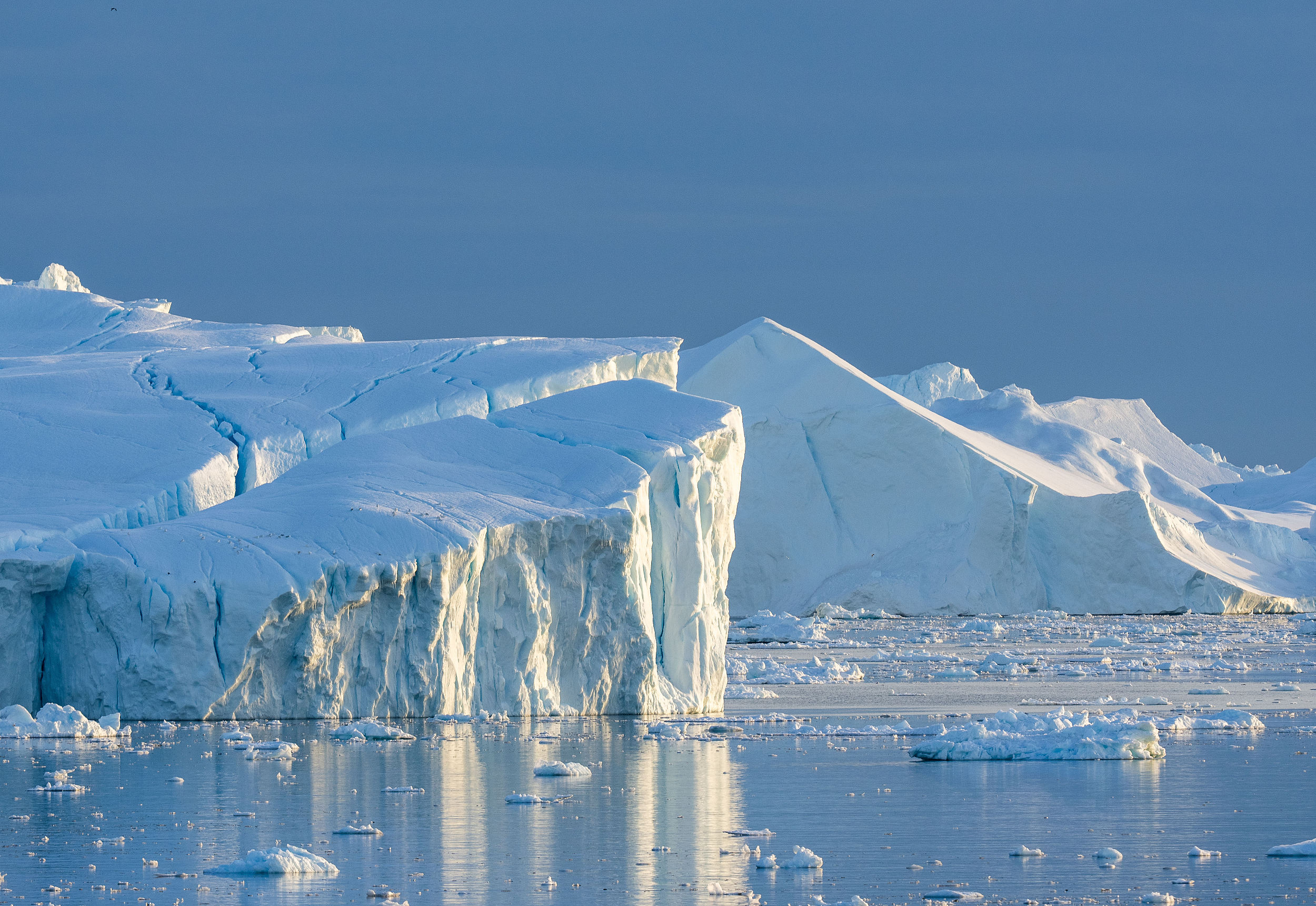
The?icebergs?on?the?Greenland?are?melting.?(PHOTO:?VCG)
By LIU YIN & ZHONG Jianli
Polar ice caps are melting rapidly and making the global sea level rise faster while the rate of global forest restoration is still lower than that of destruction. That is the warning conveyed by the Remote Sensing Monitoring of the Global Ecological Environment Report 2023 recently released by China's Ministry of Science and Technology.
The 12th edition of the annual report includes three special reports: on the impact of global land cover change on carbon loss and absorption; the production of major grain and oil crops globally and food security; and the changes and impact of ice and snow in the polar regions and the Qinghai-Tibet Plateau, according to Zhao Jing, director of the National Remote Sensing Center and chair of the editorial board for the reports.
The report found an accelerating trend in carbon loss due to global forest changes and the expansion of impervious surface areas from 1985 to 2020, resulting in an accumulated net carbon loss of approximately 250.3 billion tons.
During the same period, annual global forest destruction increased from 121,700 square kilometers to 284,000 square kilometers, while the annual recovered forest area increased from 68,400 square kilometers to 198,900 square kilometers, remaining below the destruction rate.
Liu Liangyun, a researcher at the Aerospace Information Research Institute of the Chinese Academy of Sciences, said there was some progress in curbing the accelerated reduction of forested areas globally. However, he emphasized that the current efforts have not entirely met the goal of "protecting, restoring and promoting the sustainable use of terrestrial ecosystems."
Over the surveyed 35 years, global forest recovery absorbed around 9.84 billion tons of carbon, with significant contributions from South America, Africa and Asia, which accounted for about 80 percent of the total. Nevertheless, the carbon absorbed through forest recovery could offset only around 30 percent of the carbon loss from forest destruction.
This underscores the importance of enhancing forest vegetation restoration and improving the carbon sequestration capacity of terrestrial ecosystems by the international community to address global climate change and achieve the carbon neutrality goals.
The report also highlighted a significant shrinkage in the overall scale of sea ice in the Arctic and Antarctic and the snow cover on the Qinghai-Tibet Plateau, with the ice caps in these regions and glaciers on the Qinghai-Tibet Plateau shrinking. The deterioration of glaciers in these regions is correlated with global warming.
Despite frequent extreme events in 2023, their impact on the production of major grain and oil crops globally was relatively mild. The total production of these crops is estimated to be 2.874 billion tons, an increase of 14.14 million tons compared to the previous year, representing a growth of 0.5 percent.
Over the last 40 years, the drought resilience of major grain and oil crop-producing regions worldwide has notably improved. This can be attributed to various measures adopted in the regions, including safeguarding irrigation, using plastic mulching, conserving arable land, adjusting planting structures, and selecting drought-resistant plant varieties.
The trio will conduct a series of experiments in fields such as life science, fluid physics, combustion science and materials science. Notably, this is the first time that fruit flies have been taken on a Chinese space mission as experimental subjects. What made scientists choose fruit flies? What experiment will they undergo?
